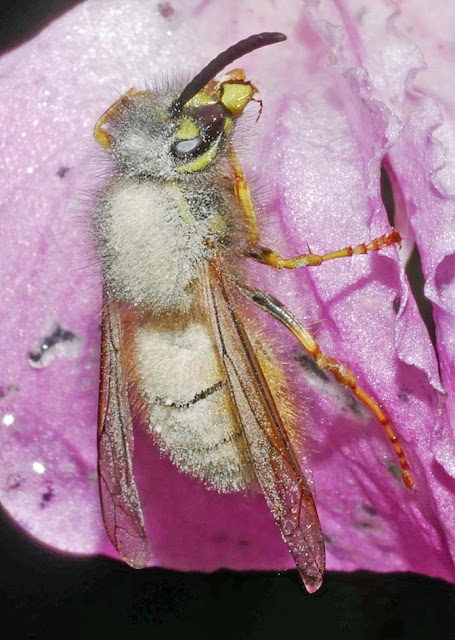Himalayan balsam is notoriously invasive and the chances of ever eliminating it on a large scale seem negligible. Even when plants are pulled up there is always a large seed bank in the soil, and flooding carries the seeds far and wide along river valleys. But it does have at least one virtue: it's a very rich source of nectar late in the year, when few native nectar-rich plants are available. Bees and wasps find it irresistible.
The flowers have a distinctive pollination mechanism, with anthers positioned in the roof of the flower, so they deposit pollen very efficiently on the upper thorax of visiting insects, like the honeybee above and the wasp below.
Subscribe to:
Post Comments (Atom)






























No comments:
Post a Comment
Note: Only a member of this blog may post a comment.